 |
 |
 |
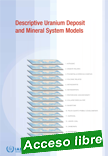 |
Descriptive Uranium Deposit and Mineral System Models
IAEA/DES/MOD, 313 pp., 231 figs; 2020; ISBN: 978-92-0-109220-5, English,
This publication provides a set of systematic descriptive models for each uranium deposit type, subtype and class, using a consistent approach to summarise the same types of information for each. Each model is intended to have a standalone capability, using a tabular style that is typical of conventional mineral resource industry standards. Each deposit model includes a map showing the distribution of deposits, and grade-tonnage graphs.
|
Collectively, these databases and models form a basis for assessing the global distribution of uranium deposits and evaluating supply-demand scenarios. With these, the IAEA can provide the capability for Member States to assess the potential of remaining — or speculative — uranium resources for long term supply beyond identified resources in a consistent and reproducible manner.
|
 |
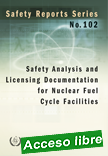 |
Safety Analysis and Licensing Documentation for Nuclear Fuel Cycle Facilities
Safety Reports Series No. 102
This publication gives practical information and examples on safety analysis principles and methods as well as the contents of licensing documentation needed to support application of IAEA safety standards to nuclear fuel cycle facilities. A systematic methodology is presented, covering the establishment of acceptance criteria, hazard evaluation, identification of postulated initiating events, analysis of accident sequences and consequences.
|
Information is also provided on application of the results of the safety analysis in the design and operational phases, and on appropriate management system processes. The publication applies to all lifetime stages of relevant facilities and for modifications and upgrades. The information presented may be used for periodic safety reviews and consideration of extended lifetime of facilities. With respect to licensing documentation, the publication provides indicative contents and format of the safety analysis report as a higher level document that incorporates the information required at various steps in the licensing and re-licensing process.
|
 |
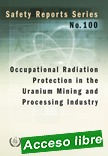 |
Occupational Radiation Protection in the Uranium Mining and Processing Industry
Safety Reports Series No. 100
This Safety Report has been developed as part of the IAEA programme on occupational radiation protection to provide for the application of its safety standards in implementing a graded approach to the protection of workers against exposures associated with uranium mining and processing. The publication describes the methods of production associated with the uranium industry and provides practical information on the radiological risks to workers in the exploration, mining and processing of uranium.
|
It is a compilation of detailed information on uranium mining and processing stages and techniques, general radiation protection considerations in the relevant industry, general methodology applicable for control, monitoring and dose assessment, exposure pathways, and radiation protection programs for the range of commonly used mining and processing techniques.
|
 |
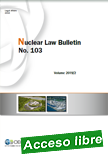 |
Nuclear Law Bulletin
No. 102 2019/2 OECD/NEA
The Nuclear Law Bulletin is a unique international publication for both professionals and academics in the field of nuclear law. It provides readers with authoritative and comprehensive information on nuclear law developments. Published free online twice a year in both English and French, it features topical articles written by renowned legal experts, covers legislative developments worldwide and reports on relevant case law, bilateral and international agreements as well as regulatory activities of international organisations.
|
.
|
 |
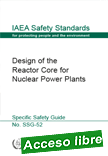 |
Design of the Reactor Core for Nuclear Power Plants
Specific Safety Guide
The reactor core is the central part of a nuclear reactor where nuclear fission occurs. It consists of four basic systems and components: the fuel (including fuel rods and the fuel assembly structure), the coolant, the moderator and the control rods, as well as additional structures such as reactor pressure vessel internals, core support plates, and the lower and upper internal structure in light water reactors. This Safety Guide provides recommendations on meeting the safety requirements established in SSR-2/1 (Rev. 1) applied to the design of the reactor core for nuclear power plants.
|
The publication addresses the safety aspects of the core design and includes neutronic, thermohydraulic, thermomechanical, and structural mechanical aspects. Other aspects considered are those relating to reactor core control, shutdown and monitoring, and core management.
|
 |
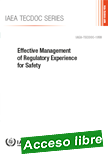 |
Effective Management of Regulatory Experience for Safety
IAEA TECDOC No. 1899
English IAEA-TECDOC-1899 978-92-0-101920-2 - 142 pages 2020
The analysis of operating experience of regulated facilities and activities has traditionally been considered as an important source of knowledge for improving the regulatory process. Regulatory bodies are continuously exposed to learning possibilities from multiple sources of experience, such as from the implementation of regulatory functions, regulatory research, and work carried out by international committees and working groups.
|
Taking advantage of all these learning possibilities is beneficial for further enhancing the effectiveness and efficiency of the regulatory process and this publication was developed to assist in this activity. It presents information about existing practices in regulatory bodies for managing regulatory experience and, through a series of experts’ meetings an assessment of that information is presented to identify possible measures that might help regulatory bodies enhance their current practices where necessary.
|
 |
 |
INPRO Methodology for Sustainability Assessment of Nuclear Energy Systems: Safety of Nuclear Reactors INPRO Manual
IAEA TECDOC No. 1902 - English IAEA-TECDOC-1902 978-92-0-102720-7 - 110 pages 2020
Providing guidance to those assessing a planned nuclear energy system (or a nuclear reactor), this publication provides detail on how to apply the INPRO methodology for sustainability assessment in the area of safety of nuclear reactors. It augments the information presented in the earlier INPRO publications on the methodology for sustainability assessments.
|
The INPRO assessment is expected either to confirm the fulfilment of all INPRO methodology criteria in the area of reactor safety, or to identify which criteria are not fulfilled and the corrective actions that would be necessary to fulfil them. The publication is intended for use by organizations involved in the development and deployment of a nuclear energy system, including planning, design, modification and technical support for nuclear power plants. INPRO is an international project to help ensure that nuclear energy is available to contribute in a sustainable manner to meeting the energy needs of the 21st century.
|
 |
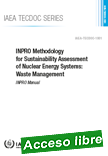 |
INPRO Methodology for Sustainability Assessment of Nuclear Energy Systems: Waste Management
IAEA TECDOC No. 1901 - English IAEA-TECDOC-1901 978-92-0-102520-3 – 74 pages 2020
This publication presents the latest update to the INPRO methodology for Nuclear Energy Systems sustainability assessment in the area of waste management and reflects detailed discussions held at an IAEA technical meeting. Waste generated by nuclear energy systems and considered in this publication includes all classes and categories of waste from nuclear power plants and nuclear fuel cycle facilities over the course of normal operations and anticipated operational occurrences.
|
It is anticipated that the information presented in this and other INPRO publications, for example IAEA Nuclear Energy Series No. NG-T-3.12, will assist in the identification of areas for improvement in nuclear energy systems. INPRO is an international project to help ensure that nuclear energy is available to contribute in a sustainable manner to meeting the energy needs of the 21st century.
|
 |
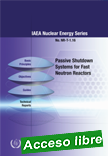 |
Passive Shutdown Systems for Fast Neutron Reactors
IAEA Nuclear Energy Series No. NR-T-1.16
Designs for nuclear power plants increasingly include passive features. A major focus of the design of modern fast reactors is on inherent and passive safety. Inherent and passive safety features are especially important when active systems such as emergency shutdown systems for reactor shutdown are not functioning properly. This publication discusses the past experience in the development of such systems along with the research that is ongoing.
|
It is a comprehensive publication which provides information on the basic design principles for passive shutdown systems and the related operational experience gathered so far, and also reviews the innovative concepts under development and the needs for research and development and qualification tests.
|
 |
 |
Chemical thermodynamics of iron
part 2 - 2020
This is Part 2 of Volume 13 of the “Chemical Thermodynamics” (TDB) series, edited by the OECD Nuclear Energy Agency (NEA), and is the second of two volumes describing the selection of chemical thermodynamic data for species of iron. As confirmed in 2008, because of the voluminous information in the literature it was decided that it would be more efficient to prepare the review in two parts.
|
Part 1 contained assessments of data for the metal, simple ions, aqueous hydroxido, chlorido, sulfido, sulfato and carbonato complexes, and for solid oxides and hydroxides, halides, sulfates, carbonates and simple silicates – data judged to be of key interest for radioactive waste management calculations. This second part of the review provides assessments of data for sulfide solids, and solid and solution species with nitrate, phosphate and arsenate, for some aqueous species not considered in TDB-Iron Part 1, and some aspects of solid solution formation in iron-oxide and iron-sulfide systems. Even now, because of limitations on resources and time, many complex solid systems such as iron titanates, aluminates and more complex systems could not be assessed
|
 |
| |
|
|

|
|
|
| |
|
|
| |
| |
|
|
| |
| |
|
|
| |
| |
|
|
|
| |
| |
